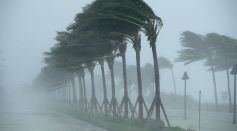ENVIRONMENT & CLIMATE

Two New Fungus Species Named After the Coronavirus Pandemic

31 New Marine Species Discovered in the Galapagos Archipelago

Autopsies Show Microplastics Are in Internal Organs

New Research Allows Early Detection of Megastorms

Forest Contribution to Seasonal Carbon Flux Depends on Location, Study Says
Preserved Ice Age Puppy Apparently Ate a Woolly Rhino Before It Died

Silk and Polymer Compounds Lead to New Biomedical Implants

Sephora Partners With Several Companies for Transparency & Clean Labels

Explore Hallett Cove in Australia, Thanks to Virtual Reality

Bunkering Activity in Algoa Bay Are a Major Threat to African Penguin Populations

Magnificent Red Jellyfish Sprite Photographed During A Storm in Mount Locke

Melting Permafrost Could Mean Return of Ancient Diseases
Several 'Firenados' Blaze Through California

A Huge 40lb Mackerel Kills a Fisherman by Hitting Him in the Chest
Most Popular

Largest Known Volcanic Aquifer Discovered Beneath Oregon's Cascades

New 'Supergiant' Sea Bug Found in South China Sea, Named After Darth Vader

Mediterranean Sea Was Refilled by a Catastrophic Flood Millions of Years Ago

Mysterious Cosmic Waves That Sound Like Birds Detected in Unexpected Space Region





